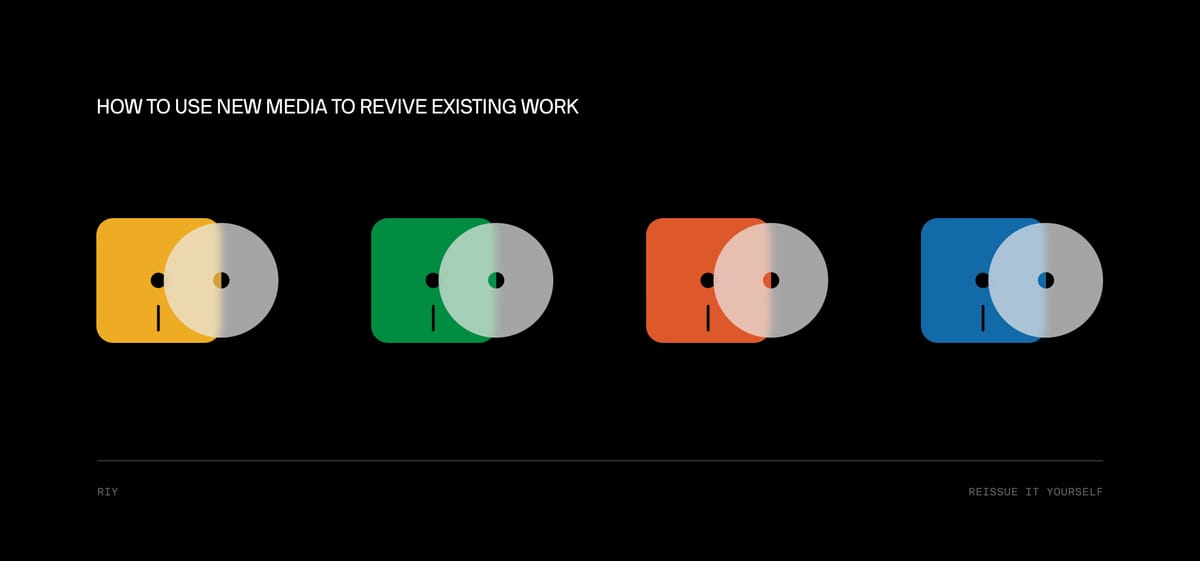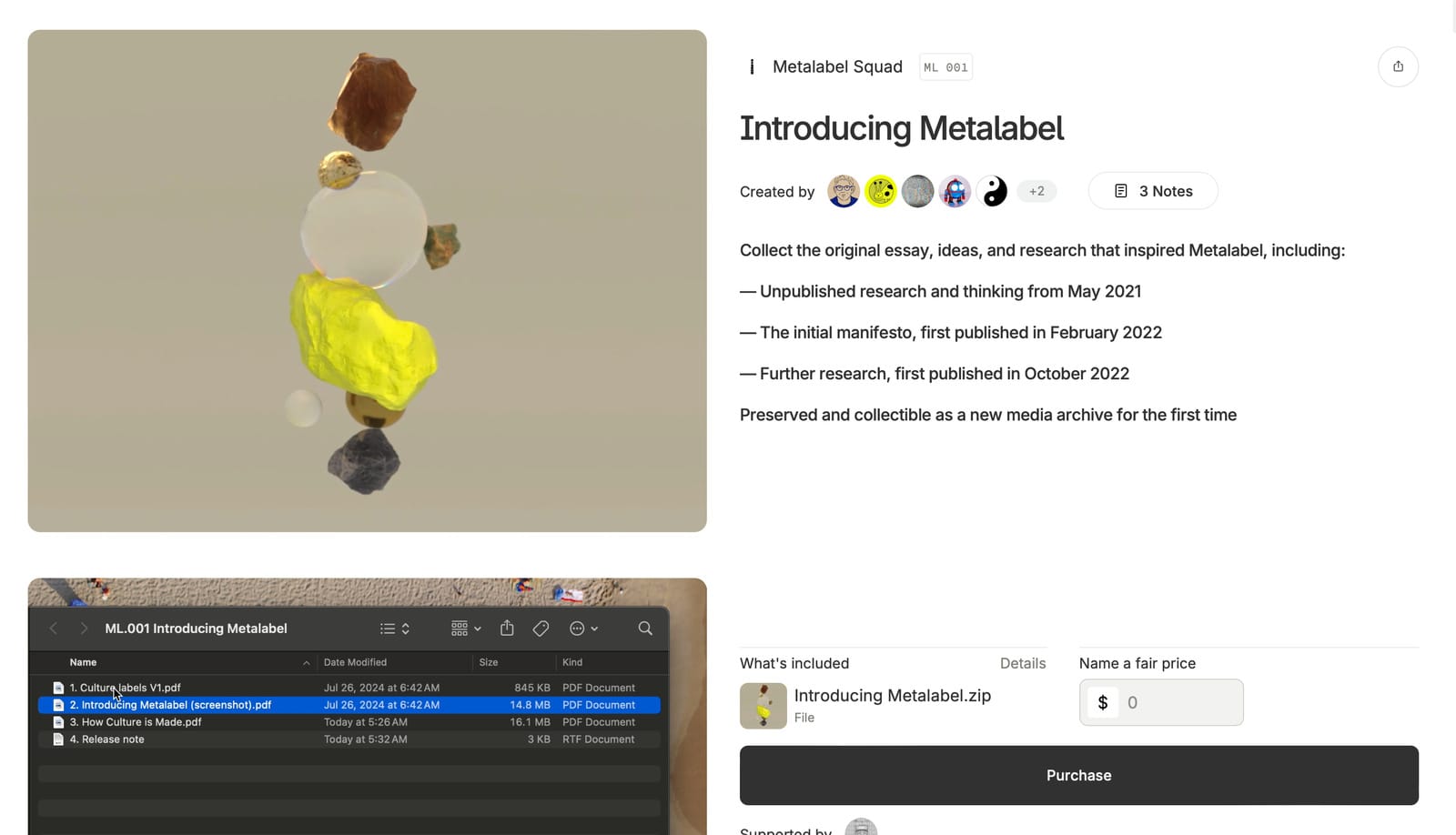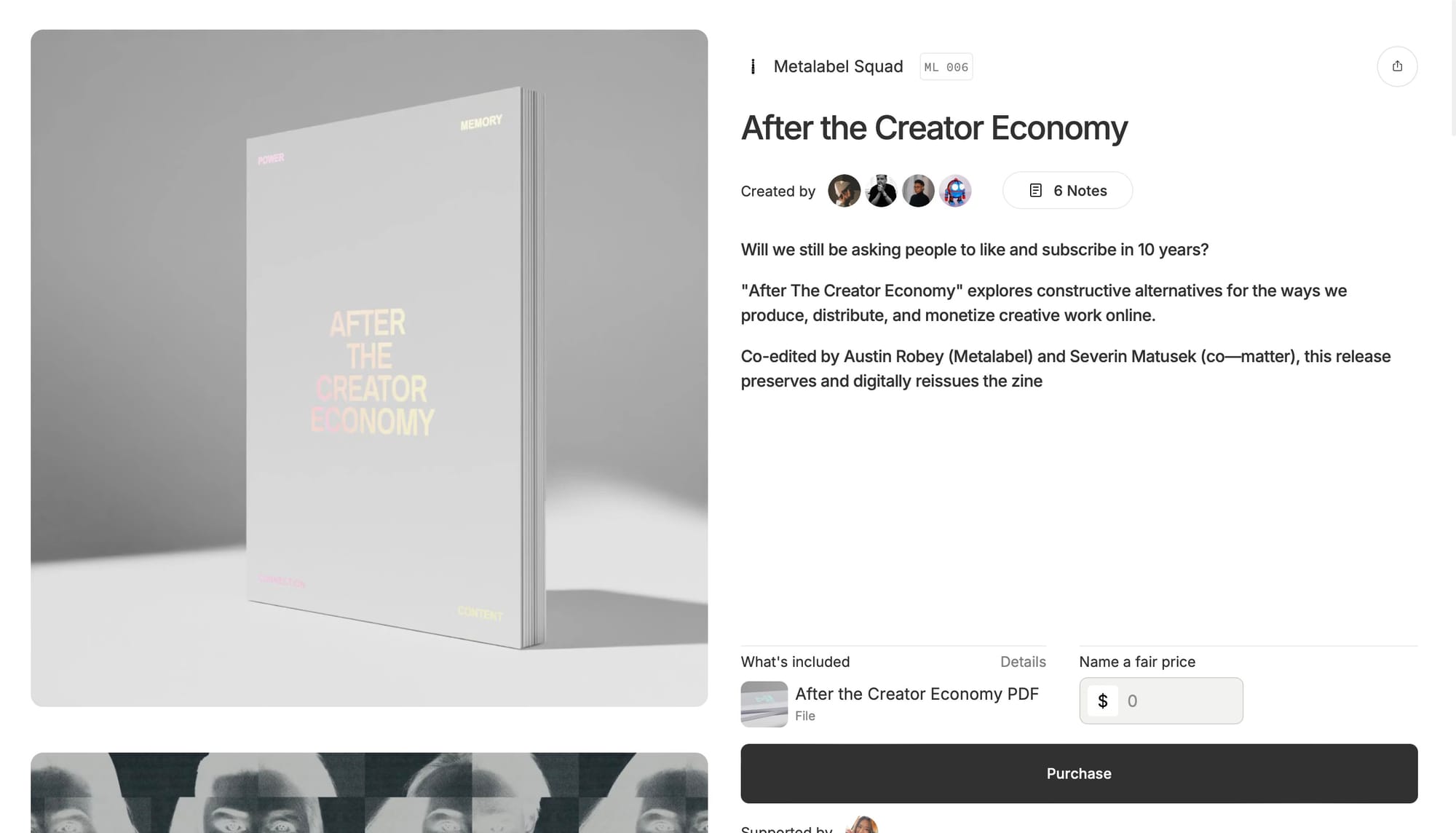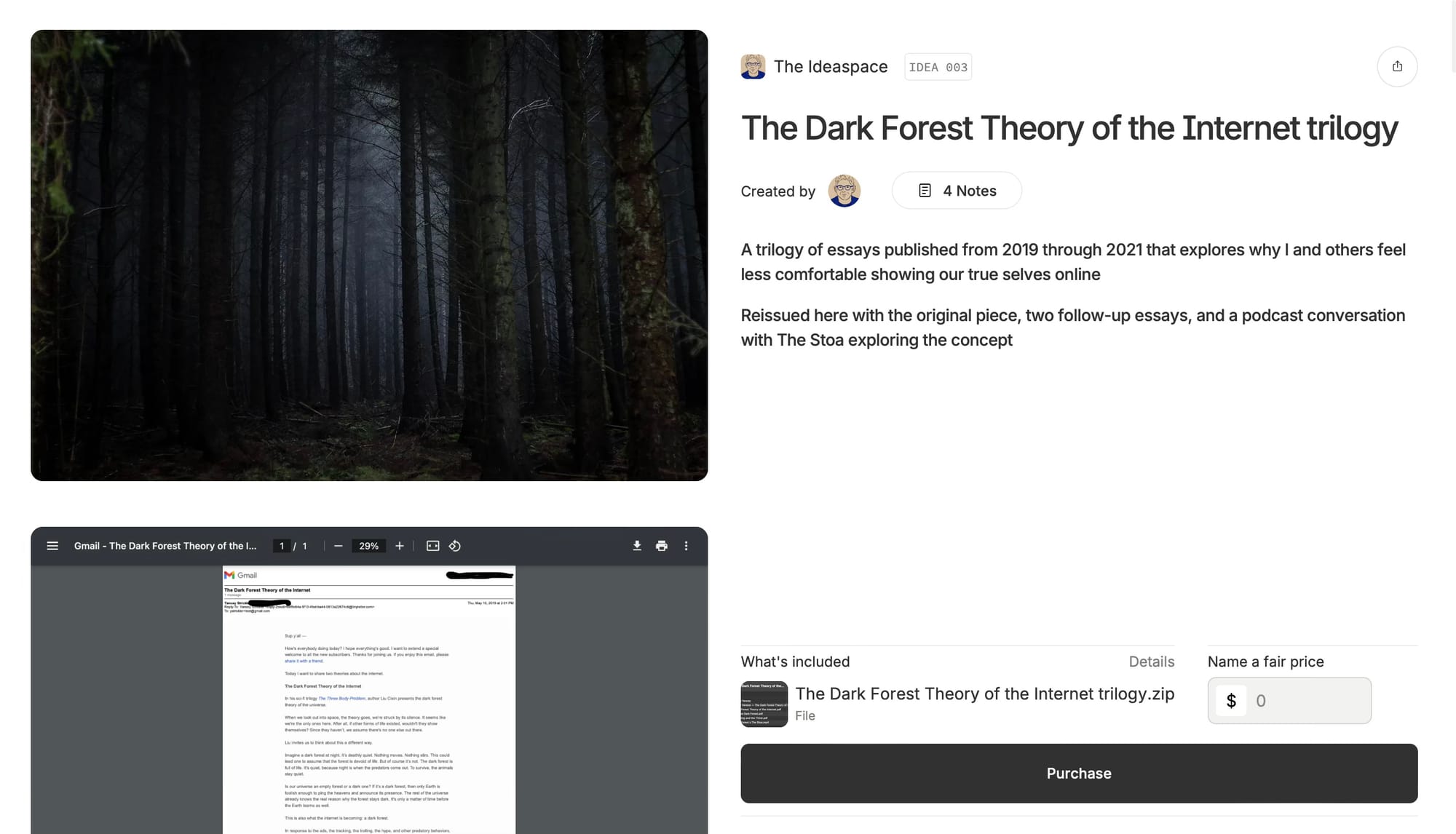How to use New Media to revive existing work
Embed the past in the present and the present in the past

Two weeks ago we published New Media, a call for a new way of releasing creative work that:
- breaks out of existing platform boxes
- isn’t limited by formats, genres, or business lines
- invites the audience to engage with the work in new ways
- is opinionated about the internet’s scale
We shared examples of New Media works that have moved us, like Molly Soda’s “mollystuff,” YACHT’s New Release, “The Post Individual,” “Introducing Hard Art,” the output of Chia Amisola, and other contemporary artists we admire.
Those are new New Media works. What happens if you approach past work with a New Media lens?
Reissuing New Media
All creative people have catalogues of work we release over time. For anyone putting things online, that work is spread across platforms on whose continued existence and support we depend for that work to live on.
Our creative output is only as safe as our interests align with those of the platforms, and it’s not uncommon for data to disappear or become inaccessible after a platform changes business strategies. More than once I’ve personally had platforms hold work hostage behind paywalls until I paid up.
There are also questions of context. How can people who come across our work from years ago get the context of where it came from and even what followed? What if we could layer our own perspective over our work regardless of where or when it was first published?
This week we’re experimenting with a New Media way of exploring this. We’re reissuing three pieces from our past in new contexts and forms:
- Introducing Metalabel, our first manifesto, released with the unpublished essay that first inspired it
- After the Creator Economy, a sold-out zine we co-published with co—matter preserved as an editioned digital download
- The Dark Forest Theory of the Internet trilogy, which collects the original private email I sent to my small audience five years ago that introduced the Dark Forest idea, as well as two other essays in the series and a video conversation with Peter Limberg from The Stoa
Each is being newly reissued for collectors, who receive handmade download packages containing the original work and the ideas behind them. They also get credited for how early they supported the work, and can choose to financially support the creators if they wish.
New Media experimental toolkit
To execute this experiment, we combined a handful of free tools and simple steps:
- We used a Chrome extension called GoFullPage to download and save complete webpages of our work as images and PDFs in their original visual context. There are similar tools for downloading media.
- We uploaded the images and other core media onto a Metalabel release page
- We added release notes and a personal note to a downloadable package
- We made them free to collect, but people can choose to financially support the work if they feel compelled
You can visit the release pages to go deeper into the pieces and experiment:
Introducing Metalabel

After the Creator Economy

The Dark Forest Theory of the Internet trilogy

We’re excited to continue this experiment and see where else this New Media way of thinking can take us.
Does it spark something in you? Drop us a line if you want to try your own New Media experiment: hello@metalabel.com
